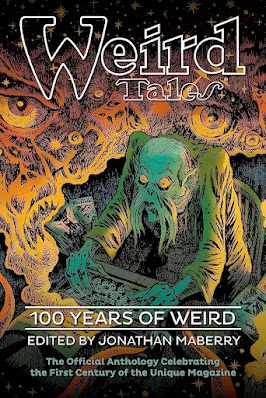The Pioneering Legacy of Weird Tales Magazine: A Journey into the Strange
by Olivia Salter
Weird Tales | Established in 1923 | Rural; Popular Fiction | Edited by Farnsworth Wright (1924-40) | Total Issues: 279.
Weird Tales Magazine holds a significant place in the history of speculative fiction, known for its exploration of the strange, macabre, and supernatural. Born in the vibrant era of pulp magazines, Weird Tales became a breeding ground for influential authors and a catalyst for the development of new genres. From its inception in 1923 to its revival and ongoing impact today, the magazine has left an indelible mark on the world of weird fiction.
Early Years: Setting the Stage
Weird Tales was founded by J.C. Henneberger and J.M. Lansinger, with Edwin Baird serving as the first editor. In its inaugural years, the magazine primarily published adventure stories, but it soon shifted focus towards the supernatural horror and fantasy genres. The early contributors to Weird Tales significantly shaped the evolution of speculative fiction, including the greats such as H.P. Lovecraft, Robert E. Howard, and Clark Ashton Smith.
Lovecraft's Influence: Cosmic Horror Emerges
Perhaps one of the most notable contributions to the legacy of Weird Tales was the emergence of cosmic horror through the works of H.P. Lovecraft. Lovecraft's atmospheric storytelling, blending psychological terror, cosmic entities, and forbidden knowledge, became a staple of Weird Tales. His iconic Cthulhu Mythos and his creation of the Necronomicon inspired numerous writers and helped shape the genre for years to come.
The Weird Circle Expands: Diverse Voices in Weird Tales
Weird Tales was not confined to a single style or theme. It provided a platform for various writers to experiment with different subgenres of weird fiction. Talented authors like Robert Bloch, Fritz Leiber, C.L. Moore, and Ray Bradbury added depth and diversity to the magazine's offerings. Their contributions expanded the scope of the weird and showcased the multi-faceted nature of the genre.
A Challenging Journey: Staying Afloat and Evolving
Despite its enduring influence, Weird Tales faced several challenges over the years, including financial difficulties and shifts in ownership. The magazine experienced periods of hiatus and irregular publication but always managed to resurface. In the 1970s, it transformed into a semi-professional publication, broadening its scope to include contemporary horror.
Revival and Contemporary Impact
With the turn of the 21st century, Weird Tales enjoyed a revival under the leadership of Ann VanderMeer and later her husband, Jeff VanderMeer. They infused the magazine with fresh ideas, showcasing innovative voices in weird fiction and championing diversity. The VanderMeers' tenure ushered in a new era, garnering critical acclaim and Hugo and World Fantasy awards.
Today, Weird Tales continues to push boundaries and nurture emerging talent, with a focus on promoting marginalized voices and exploring the frontiers of genre-blurring fiction. It remains an influential force in the literary world, inspiring readers and writers alike.
In conclusion, the history of Weird Tales Magazine is a testament to the enduring power of weird fiction. From its origins as a pulp magazine to its ongoing legacy, the publication has served as a breeding ground for groundbreaking stories and visionary authors. Through their exploration of the weird supernatural and cosmic horror, these writers have shaped the literary landscape and captivated generations of readers. The mantle of Weird Tales lives on, forging new paths into the strange and reaffirming the enduring allure of the extraordinary.
👉Get a copy of "Weird Tales: 100 Years of Weird" at Amazon👈


No comments:
Post a Comment
Note: Only a member of this blog may post a comment.